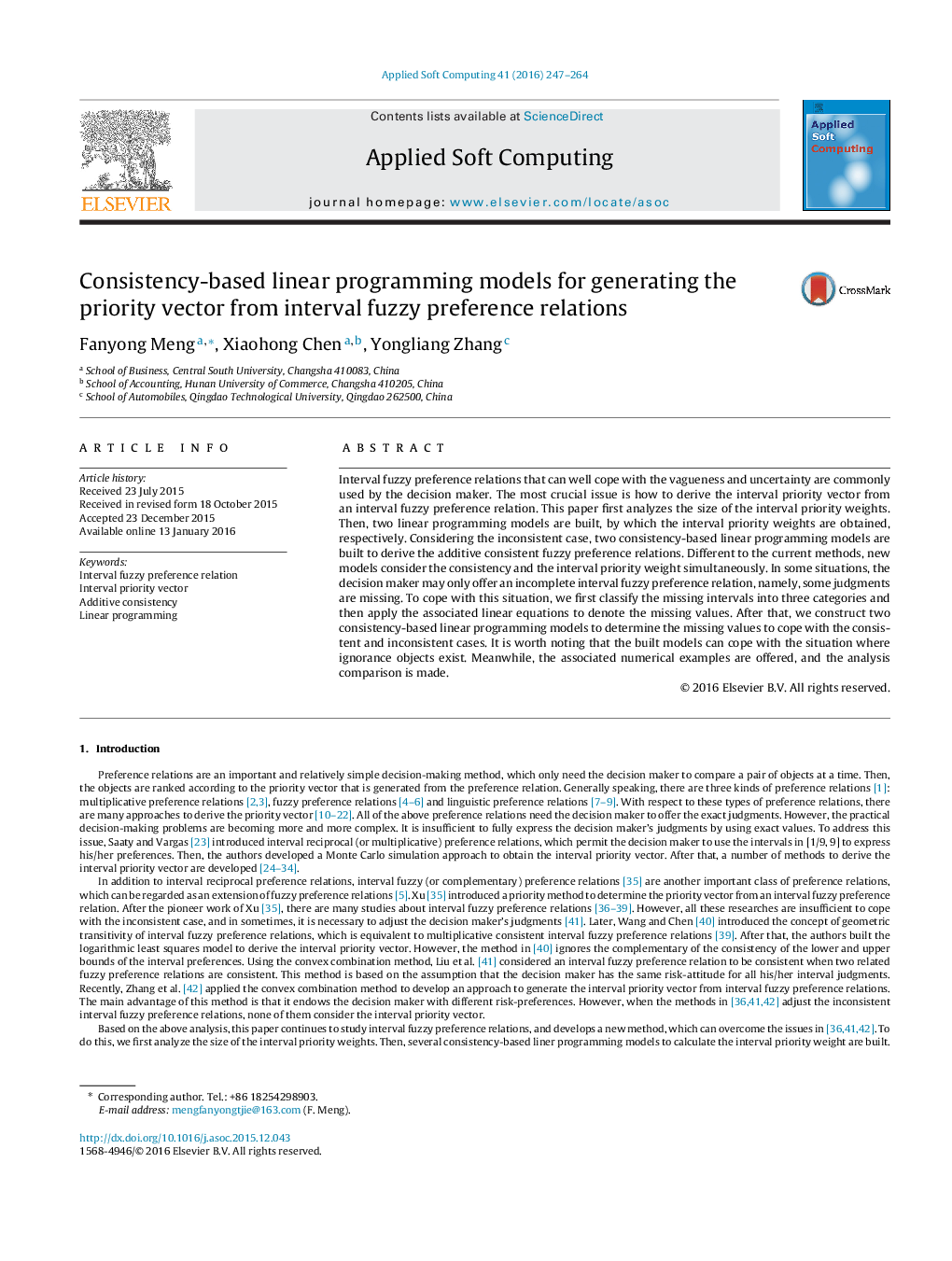| کد مقاله | کد نشریه | سال انتشار | مقاله انگلیسی | نسخه تمام متن |
|---|---|---|---|---|
| 494768 | 862807 | 2016 | 18 صفحه PDF | دانلود رایگان |
• This paper first analyzes the size of the interval priority weight.
• Two models are built to derive the interval priority weight of each object.
• Then, two models are built to cope with the inconsistency for each object.
• Furthermore, two models are constructed to derive the missing values.
• Numerical examples and comparison analysis are made.
Interval fuzzy preference relations that can well cope with the vagueness and uncertainty are commonly used by the decision maker. The most crucial issue is how to derive the interval priority vector from an interval fuzzy preference relation. This paper first analyzes the size of the interval priority weights. Then, two linear programming models are built, by which the interval priority weights are obtained, respectively. Considering the inconsistent case, two consistency-based linear programming models are built to derive the additive consistent fuzzy preference relations. Different to the current methods, new models consider the consistency and the interval priority weight simultaneously. In some situations, the decision maker may only offer an incomplete interval fuzzy preference relation, namely, some judgments are missing. To cope with this situation, we first classify the missing intervals into three categories and then apply the associated linear equations to denote the missing values. After that, we construct two consistency-based linear programming models to determine the missing values to cope with the consistent and inconsistent cases. It is worth noting that the built models can cope with the situation where ignorance objects exist. Meanwhile, the associated numerical examples are offered, and the analysis comparison is made.
Figure optionsDownload as PowerPoint slide
Journal: Applied Soft Computing - Volume 41, April 2016, Pages 247–264
